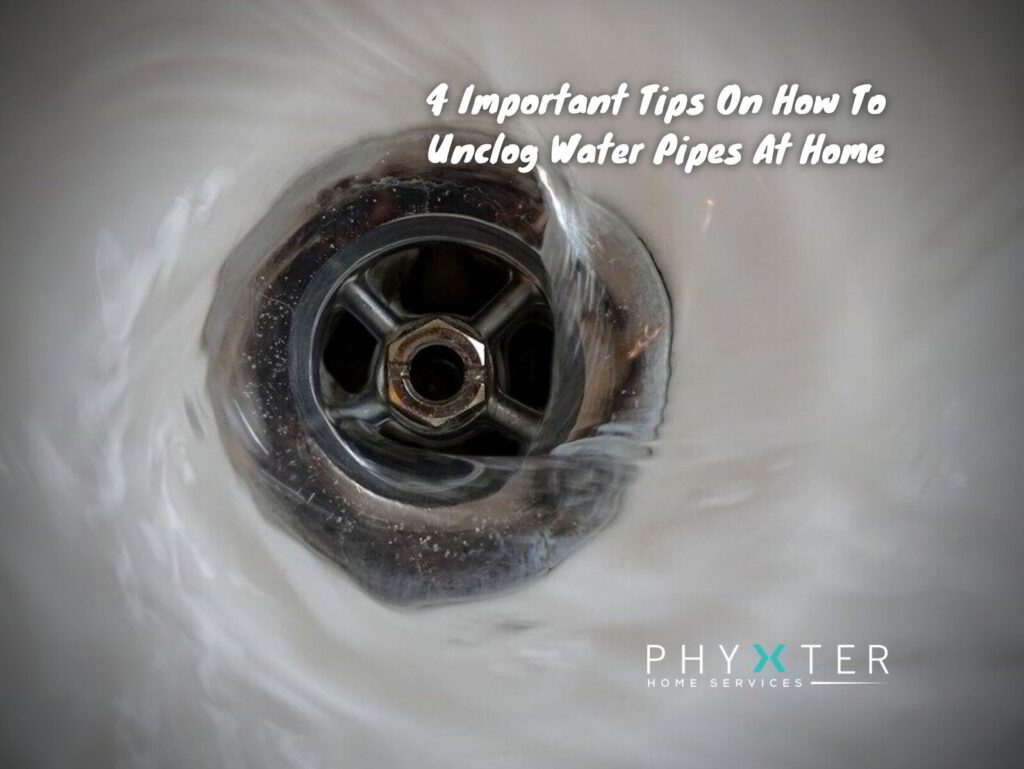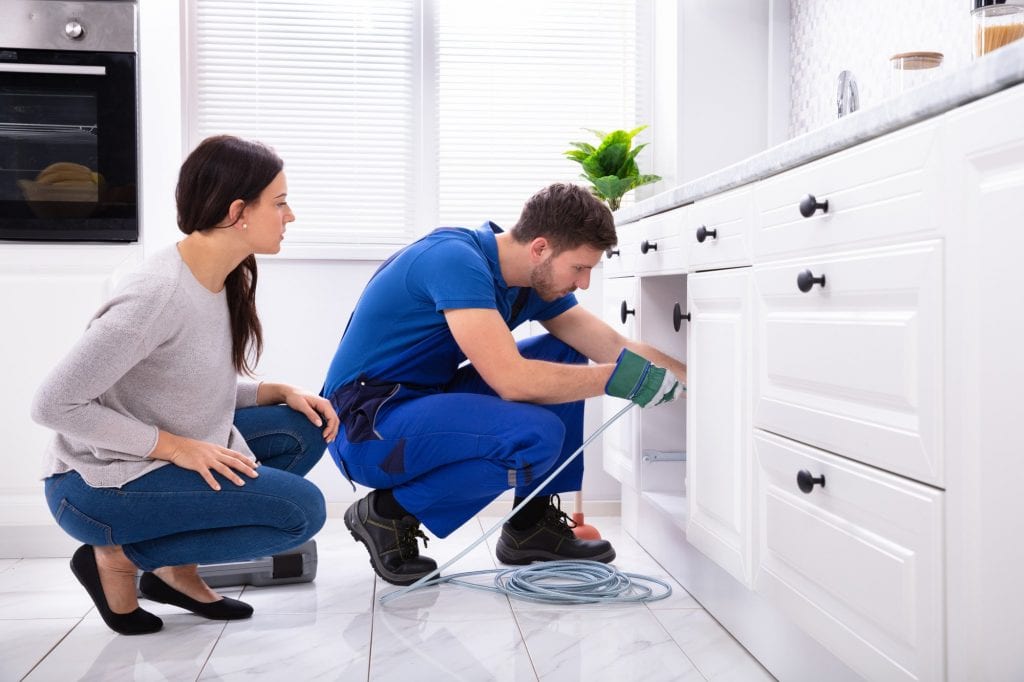Pipe Freedom: Effective Strategies for Unclogging Home Drains

The Common Plight of Clogged Home Pipes
Dealing with clogged pipes is a common woe for homeowners, causing inconvenience and sometimes even damage. Unclogging home pipes is a task that, with the right strategies, can be managed effectively. This article explores various techniques and preventive measures to regain pipe freedom and maintain a smoothly flowing plumbing system.
Identifying the Culprits Behind Clogs
Before diving into unclogging strategies, understanding the culprits behind clogs is crucial. Hair, soap scum, grease, food particles, and foreign objects are common offenders. Identifying the specific cause helps in choosing the most effective unclogging methods.
Prevention: The First Line of Defense
Preventing clogs is the first line of defense for maintaining clear and functioning pipes. Using drain screens in sinks and tubs can catch hair and debris before they enter the pipes. Additionally, being mindful of what goes down the drain, such as avoiding pouring grease or large food particles, contributes to preventive care.
Natural Solutions for Unclogging
For minor clogs, natural solutions can be effective. Baking soda and vinegar, a classic combination, can break down organic matter. Pouring boiling water down the drain afterward can help flush away the loosened debris. This natural approach is gentle on pipes and environmentally friendly.
Plunging: A Time-Tested Technique
The trusty plunger remains a go-to tool for unclogging drains. Whether it’s a sink or a toilet, a plunger can create the necessary pressure to dislodge blockages. Ensuring a proper seal and using strong, forceful plunges can often clear simple clogs.
Chemical Drain Cleaners: Proceed with Caution
While chemical drain cleaners are readily available, they should be used with caution. These products contain powerful chemicals that can be harsh on pipes and harmful to the environment. If used, following safety instructions is crucial, and it’s advisable to explore more environmentally friendly options first.
Snaking the Pipes: A Deeper Reach
When clogs persist, a plumbing snake, or auger, can be employed for a more in-depth reach. This tool can navigate twists and turns in pipes, breaking up and removing stubborn blockages. Snaking is particularly useful for addressing clogs deeper within the plumbing system.
Professional Assistance for Stubborn Clogs
For persistent or severe clogs, seeking professional assistance is wise. Professional plumbers have the expertise and tools to handle complex blockages. Hydro-jetting, a high-pressure water technique, is one advanced method used by professionals to clear pipes effectively.
Regular Maintenance for Lasting Results
To avoid recurring clogs, incorporating regular maintenance into your home care routine is essential. Flushing drains with hot water periodically can help prevent the buildup of grease and soap scum. Additionally, scheduling professional drain cleaning on a routine basis can keep your pipes in optimal condition.
Unclog Home Pipes: A Freer Flow Awaits
In conclusion, dealing with clogged home pipes is a common challenge, but with the right strategies, it’s a manageable one. From preventive measures and natural solutions to plunging, snaking, and professional assistance, there are various ways to regain a freer flow in your plumbing system. To explore more about unclogging home pipes and effective plumbing solutions, visit Unclog Home Pipes for valuable insights and resources. Say goodbye to clogs and welcome a smoothly flowing home plumbing system.
Flow Woes: Tackling Home Drain Issues Head-On

Unraveling the Mysteries: Understanding Home Drain Issues
Home drain issues can be a source of frustration for homeowners, causing disruptions and potential damage. This article aims to unravel the mysteries surrounding common drain problems, providing insights into their causes, preventive measures, and effective solutions.
Identifying the Culprits: Common Causes of Drain Problems
Understanding the common culprits behind home drain issues is the first step in tackling the problem. Hair, soap scum, grease, and foreign objects are frequent contributors to clogs. Additionally, tree roots invading underground pipes and mineral buildup over time can lead to drainage problems. Identifying the specific cause allows for targeted solutions.
The Impact of Neglected Maintenance
Neglecting routine drain maintenance can exacerbate home drain issues. Over time, debris accumulates in pipes, leading to slow drainage, foul odors, and potential backups. Regular cleaning and maintenance prevent the buildup of materials that contribute to clogs, ensuring a smoothly functioning plumbing system.
DIY Solutions for Minor Clogs
For minor clogs, several do-it-yourself (DIY) solutions can be effective. Using a plunger to create pressure and dislodge blockages, pouring a mixture of baking soda and vinegar down the drain, or using a drain snake to physically remove debris are common DIY approaches. These methods are budget-friendly and can be implemented without professional assistance.
When to Seek Professional Help
While DIY solutions work for minor issues, there are times when professional help is necessary. Persistent or severe home drain issues may require the expertise of a plumber. Professional plumbers have the tools and knowledge to address complex clogs, leaks, and other plumbing problems effectively.
Preventive Measures: A Key to Long-Term Drain Health
Preventive measures play a crucial role in maintaining long-term drain health. Installing hair and debris screens in drains, avoiding the disposal of grease and large food particles in sinks, and periodic use of environmentally friendly drain cleaners are simple yet effective ways to prevent home drain issues.
Signs of Hidden Plumbing Issues
Sometimes, home drain issues may be symptomatic of more significant plumbing problems. Signs such as recurring clogs, water stains on walls or ceilings, and unpleasant odors may indicate hidden issues within the plumbing system. Identifying and addressing these signs promptly can prevent extensive damage.
The Role of Technology in Drain Maintenance
Advancements in technology have introduced innovative solutions for drain maintenance. Video inspection tools allow plumbers to identify issues within pipes without invasive measures. Hydro-jetting, a high-pressure water technique, is effective in clearing out stubborn clogs and maintaining the cleanliness of pipes.
Environmental Impact of Drain Maintenance
Considering the environmental impact of drain maintenance is an integral aspect of addressing home drain issues. Eco-friendly drain cleaners, responsible waste disposal practices, and water conservation efforts contribute to a more sustainable approach to maintaining a home’s plumbing system.
Conclusion: Navigating Home Drain Woes
In conclusion, understanding, and addressing home drain issues involves a combination of preventive measures, DIY solutions, and, when necessary, professional assistance. Regular maintenance and a proactive approach to plumbing care can prevent many common problems. To explore more about home drain issues and effective plumbing solutions, visit Home Drain Issues for valuable insights and resources. Navigate the challenges of home drainage with knowledge and informed solutions, ensuring a smoothly flowing plumbing system for your home.
Flow Woes: Navigating Home Drain Challenges

Flow Woes: Navigating Home Drain Challenges
Home drain issues can be a source of frustration for homeowners, disrupting daily routines and potentially causing damage to the property. In this article, we explore common home drain problems, their causes, and effective solutions to keep the flow smooth and prevent drainage headaches.
**1. The Culprit of Clogs: Dealing with Blocked Drains
Blocked drains are a prevalent home drain issue that can manifest in sinks, showers, and toilets. Causes range from the accumulation of hair, soap scum, grease, and foreign objects. Identifying the source of the blockage is crucial in determining the most effective method for clearing it. Regular maintenance, such as using drain covers and avoiding flushing non-biodegradable items, can help prevent clogs.
2. Leak Troubles: Addressing Plumbing Leaks
Leaky pipes or fixtures contribute to water wastage and can lead to structural damage if not addressed promptly. Common culprits include damaged seals, corrosion, or loose connections. Detecting leaks may require a careful inspection of visible pipes, checking water bills for unexpected increases, or using a water meter. Prompt repairs and regular plumbing inspections can mitigate the impact of leaks.
Home Drain Issues: Discover effective solutions at Home Drain Issues. Learn how to tackle common drainage challenges and keep your home flowing smoothly.
3. Foul Odors: Battling Unpleasant Smells
Foul odors emanating from drains are not only unpleasant but can indicate underlying issues. Accumulated debris, organic matter, or the presence of bacteria can lead to unpleasant smells. Regularly cleaning drains using a mixture of baking soda and vinegar or commercial drain cleaners can help eliminate odors. Installing traps or venting systems can also prevent gases from entering the home.
4. Slow Draining Fix: Tackling Sluggish Drains
Slow-draining sinks or showers are often a precursor to complete blockages. Hair, soap residue, or mineral buildup can impede the flow. Using a plunger, drain snake, or a combination of baking soda and hot water can help break down blockages and restore proper drainage. Regular maintenance can prevent sluggish drains from becoming more severe issues.
5. Tree Root Intrusions: Addressing Outdoor Drain Challenges
For homeowners with outdoor drains, tree root intrusions can pose a significant challenge. Tree roots seek out water sources and can infiltrate pipes, causing blockages and damage. Root barriers, regular inspections, and consulting with a professional plumber can help address and prevent tree root intrusions, ensuring the longevity of outdoor drainage systems.
6. Pipe Corrosion: Managing Aging Infrastructure
As homes age, so do the pipes within them. Corrosion can occur, leading to weakened pipes, leaks, and a decrease in water quality. Inspecting pipes for signs of corrosion, such as rust or discoloration, is crucial. Replacing corroded pipes with durable materials like PVC or copper can enhance the overall resilience of the home’s plumbing system.
7. Professional Assistance: When to Call in the Experts
While some home drain issues can be resolved with DIY solutions, certain situations may necessitate professional intervention. Persistent or severe blockages, extensive leaks, and complex plumbing system issues are best handled by experienced plumbers. Seeking professional assistance ensures that problems are accurately diagnosed and effectively resolved.
Conclusion: Maintaining a Seamless Flow
In conclusion, addressing home drain issues requires a proactive approach to maintenance and a willingness to tackle problems promptly. Regular cleaning, preventive measures, and timely repairs can help maintain a seamless flow in your home’s drainage system. By staying vigilant and taking proactive steps, homeowners can minimize the impact of common drain issues and ensure that their homes remain free from drainage woes.
